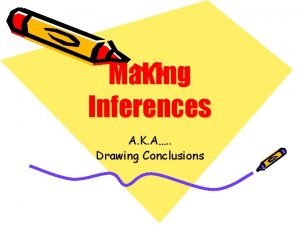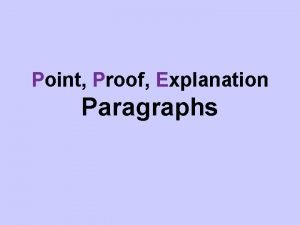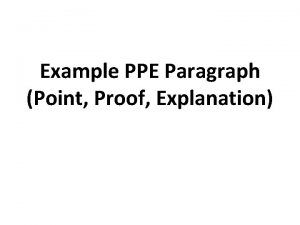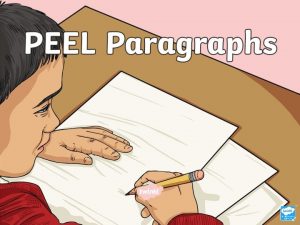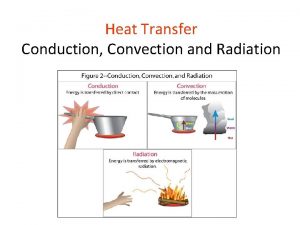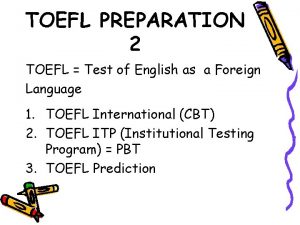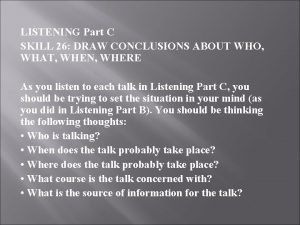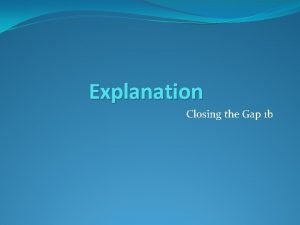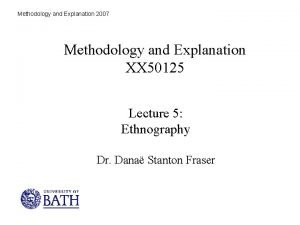Conclusions Conclusions 1 2 3 4 Explanation Example









- Slides: 9

Conclusions

Conclusions 1. 2. 3. 4. Explanation Example Dos Don’ts

1. Explanation Conclusions finish your map for readers: • Intro: sets scene for reader • Main body: visits areas of discussion & provides facts • Conclusion: provides a quick answer to the question, summarises key points and elaborates further into wider questions in the research field/society

Conclusion Specific - Broad: • Begin with specifics: Explain main point of what you argued/discussed • Become broader: What your information, data, discussions have shown in relation to your argument • Broad: Provide greater implications of your arguments when supported by this information, what the questions need to be researched next

What conclusions do REITERATE, REMIND & REFLECT! • • • Stress importance of subject Reiterate main points Review the facts you cited in the body of the paper Present the key claims which support your argument Reflect upon the significance of what you've written

2. Example In conclusion then, the answer is both yes and no. Children are possibly at risk from advertising, but the risk is balanced against commercial interests. A restriction, particularly on food products, could perhaps protect children’s health. However, business would be threatened by any greater controls, and this might in turn rebound on children by lowering the quality of television programmes available to them. Perhaps what is needed most is more research on this subject so that any public debate and any demands made to industry would have the benefit of a greater foundation on which to act. SPECIFIC - The main point of the piece BECOMING BROADER – The points that were used to support argument BROAD – A concluding sentence with a look to the future

3. DO Convince the reader of your argument • Convince the reader that your points have merit • Persuade the reader to adopt your points/believe you. • Be strong – not ‘wishy-washy’ Elaborate • Reiterate points, but add further insight supported by the main discussion • Suggest specific course of action • Provide quotation/expert opinion in support of your conclusion • Leave the reader with something to think about

4. DON’T New Ideas • Never introduce new ideas that were not discussed in the main body • Confusing for reader Repeat Language • Do not present the same words previously used in intro, main body etc. • Re-word • Keeps readers interest Overdo it • Keep it short • Word count estimation (~10%) usually one paragraph

QUESTIONS? ? ?
